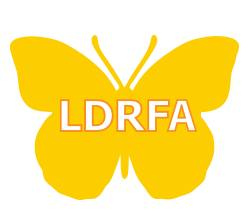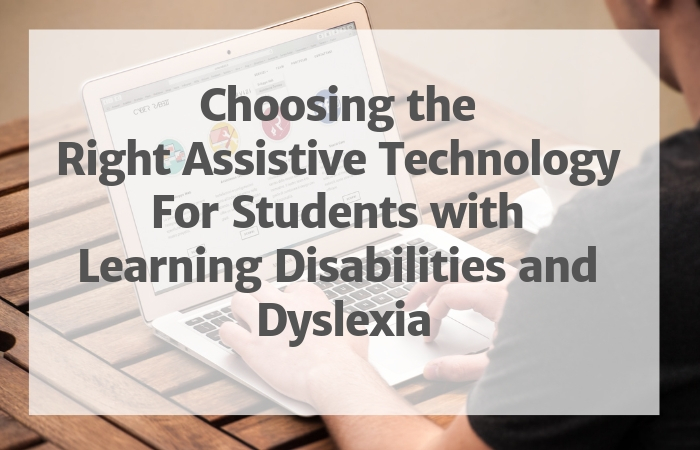By Zahavit Paz and Shannon Stringer
Table of Contents
ToggleTechnology can give students access to learning opportunities previously closed to them. These tools can help level the playing field.
Technology can be the great equalizer for teaching in a classroom with diverse learners. Teachers often find difficulty handling diverse disabilities in one classroom.
Assistive technology can often help teachers personalize lessons and skills enhancement for each student. Children with learning disabilities or dyslexia today are familiar with using technology as they use tablets from an early age to play games. Often they have more knowledge than their teachers about how to use some devices.
They are exposed and drawn to smartphones, tablets, computers and other gadgets from an early age, so for them using technology in the classroom makes perfect sense.
How to determine which assistive technology to use
When using assistive technology, it is important to look at the needs of the student and the task that is being attempted. Then you can determine if assistive technology is appropriate and which type of technology might help the student succeed. For example, text to speech is not appropriate in a decoding class, where the point of the class is to learn to decode or improve fluency.
However, in a social studies class, students should not be held back by their decoding level. Allowing them to “read” (using text to speech) allows them access to material that is at their comprehension level, which is often much higher than their decoding level.”
To be helpful and to be effective, the right assistive technology for a dyslexia learning disability must be carefully chosen to meet the student’s needs. Once it’s chosen, this set of tools can occupy them for their entire school career and will facilitate their academic studies.
What is the right amount of assistive technology for my child/student?
It’s important to find the right amount of support to help a student based on his or her needs. We know that learning disabilities and dyslexia occurs on a continuum, so different students will need different levels of support. We also know that the types of support a student needs will change throughout their lifespan, from elementary school to high school to college and beyond.
Beginning with assisting students in reading and writing, moving on to doing research and taking notes before writing at all. Some students require help with math and just about all students with learning disabilities and dyslexia need help with organization. By using assistive technology, they can comprehend print by listening and they can write by speaking.
They can take notes using highlighters on the pages and copying those words to another location. Many tools can help them organize their ideas with outlining or mind-mapping tools
Today many of these tools are available in schools as it’s required by law to make these assistive technologies available to all students with IEPs. They should be also made available at home to support students who struggle with reading, writing, and organization.
What are the best Assistive Technology tools to use?
Since a student will use assistive technology for many years, it makes sense to choose a robust system that can address a number of needs and then stick with it for a number of years, using new tools as needed. Web-based tools seem the most flexible and can be accessed from any device, so that is an important criterion. In the past, software only allowed you to install on one device and you needed to pay for any updates.
The good news is that NOW apps are web-based – available for Mac or PC users through a simple login. Students have access to these suites on any of their devices at home, at school or in the workplace. With access to technology at home, they are able to complete their homework!
Students should be given access to the software In a FLEXIBLE ENVIRONMENT with A VARIETY OF OPTIONS so learners can figure out what works best for them. All of the assistive technology companies have websites with photos and videos so that parents, students and teachers can determine which system, or suite, seems appropriate to the student.
Students should use the same technology for a number of years; switching not recommended! Software familiarity is important – think how annoyed you get when the look of your email page changes!
Latest Assistive Technology Posts
[wcp-carousel id=”5332″]The goal is to enable students to continue to use the same AT tools they used in an educational environment throughout their career. These same tools work as well in the workplace as they do in the classroom.
The good news about assistive technology for people with learning disabilities, dyslexia and ADHD.
As technology advances, there is much confusion about how to select the right tools. There are new methods of delivery of assistive technology. Google has developed accessibility tools and formed a partnership with several AT developers in an effort to lower the cost of AT tools.
They are now available to everyone! However, the free versions (typically available as add ons or extensions) are seldom as robust and error-free as the web-based programs that you pay for.
Add-Ons are, just like they sound, a way to add to your Google experience with their tools word doc emailing etc.
Extensions are like little extras to help your Chrome web-browsing experience.
Apps are stand-alone programs either used in Chrome, Android, iPad, Mac or Windows environment. (see our list of favorite Assistive Technology tools)
Web login is usually a subscription service that works on all platforms. It gives you full access to a full suite literacy set of tools and saves your books, notes, writing etc.
Learn more about the amazing new assistive technologies that are available.
The following are a few of the companies that offer Assistive
We believe at LDRFA that we should work towards one goal: provide INDEPENDENCE to all students and adults with and learning disability and dyslexia.
If you are struggling with Dyslexia or Learning disabilities, LDRFA is offering an AWARD PROGRAM for ASSISTIVE TECHNOLOGY.


